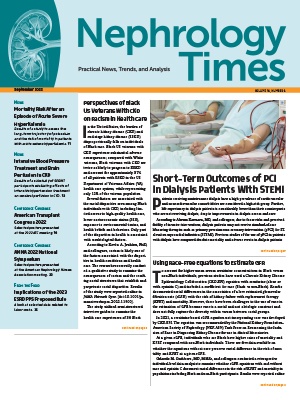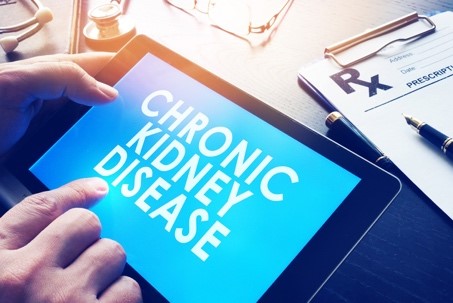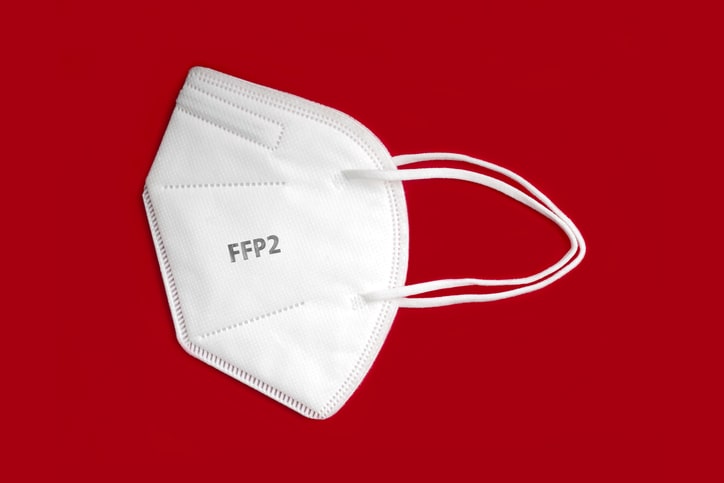
Approximately 25 million adults in the United States are affected by chronic kidney disease (CKD), characterized by a reduction in estimated glomerular filtration rate (GFR) or the presence of excess albumin in the urine. Individuals with CKD are at 2- to 7-fold increased risk for stroke and dementia; the risk varies by level of estimated GFR (eGFR) and albuminuria. There is a high prevalence of cerebral small-vessel ischemic disease in those with CKD, which is a major contributor to strike and dementia in that population.
Individuals with CKD also have a high prevalence of hypertension, which is a modifiable risk factor for strike, dementia, and cerebral small-vessel ischemic disease in the general population. Previous cohort studies have identified a J-shaped association between blood pressure and stroke risk in participants with CKD. Other studies among patients on maintenance dialysis have demonstrated an association between blood pressure instability and white matter injury and cognitive impairment. Those observations have resulted in concerns about the safety of blood pressure treatment targets in the CKD population.
Manjula Kurella Tamura, MD, MPH, and colleagues conducted a neuroimaging substudy of a randomized trial to characterize the effect of intensive blood pressure treatment on global cerebral blood flow (CBF), white matter lesions (WMLs) volume, and total brain volume (TBV) according to eGFR and urinary albumin-creatinine ratio (UACR) at study entry. The researchers also sought to evaluate the independent association between baseline eGFR and UACR with longitudinal changes in cerebral perfusion and structure. Results were reported in the American Journal of Kidney Diseases [2022;79(5):677-687].
The substudy included participants in the SPRINT (Systolic Blood Pressure Intervention Trial) who underwent brain magnetic resonance imaging (MRI) studies. Estimated glomerular filtration rate (eGFR) and urinary albumin-creatinine ratio (UACR) were used to identify the presence of CKD. Participants were randomly assigned to intensive (systolic blood pressure <120 mm Hg) or standard (systolic blood pressure <140 mm Hg) blood pressure lowering. The MRI outcome measures were the 4-year change in global CBF, WML volume, and TBV.
Of the 718 participants who completed a baseline or follow-up MRI study that met quality control requirements, 716 had baseline eGFR and 690 had baseline UACR assessments. A total of 223 participants did not complete a follow-up scan, including 88 who were unwilling to participate, 32 who withdrew or were lost to follow-up, 32 who died, and 71 who had missing scans for other reasons. Those who did not have follow-up MRI had similar eGFR and higher UACR levels compared with participants who completed follow-up. Participants in the MRI substudy were well balanced by treatment arm in baseline characteristics. At baseline, 32.8% of participants (n=234) had an eGFR <60 mL/min/1.73 m2 and 22.0% (n=151) had albuminuria.
Through the end of the active intervention phase of the trial, mean systolic blood pressure among those in the MRI substudy was 122.3 mm Hg in the intensive treatment group, compared with 135.2 mm Hg in the standard treatment group. There was no difference by eGFR in achieved systolic blood pressure in the intervention phase in either treatment group or by UACR in the standard group. However, in the intensive treatment group, systolic blood pressure was 4.6 mm Hg higher in the subgroup with UACR ≥30 mg/g than in those with UACR <30 mg/g.
Following the termination of the trial intervention, patients were managed by their primary care provider. During the transition period, mean systolic blood pressure increased in both groups. The between-group difference in systolic blood pressure was sustained across eGFR and UACR strata.
Among participants with eGFR <60 mL/min/1.73 m2, the effects of intensive versus standard blood pressure treatment on change in global CBF, WMLs, and TBV were 3.38 (95% CI, 0.32 to 6.44) mL/100 g/min, –0.06 (95% CI, –0.16 to 0.04) cm3 (inverse hyperbolic sine-transformed), and –3.8 (95% CI, –8.3 to 0.7) cm3, respectively.
Among those with UACR >30 mg/g, the effects of intensive versus standard blood pressure treatment on change in global CBF, WMLs, and TBV were 1.91 (95% CI, –3.01 to 6.82) mL/100 g/min. 0.003 (95% CI, –0.13 to 0.13) cm3 (inverse hyperbolic sine-transformed), and –7.0 (95% CI, –13.3 to –0.3) cm3, respectively.
The overall treatment effects on CBF and TBV were not modified by baseline eGFR or UACR. However, the effect on WMLs was attenuated in participants with albuminuria (P=.04 for interaction). In models adjusted for blood pressure treatment group, intracranial volume, age, sex, race, history of cardiovascular disease, smoking, MRI scanner, and baseline MRI value, there was no significant association between baseline eGFR and longitudinal changed in global CBF, WML volume, or TBV. There was also no significant association between longitudinal changes in global CBF, WML volume, or TBV and baseline UACR.
Citing limitations to the study findings, the researchers noted the MRI substudy sample being less than 10% of SPRINT participants and perhaps not representative of the overall trial population. Other limitations included the lower than expected MRI completion rate, and the use of multiple MRI scanners as a result of the multisite design that may have increased variability in measurements. In addition, the study was designed to examine longer-term changes in cerebral perfusion and structure and did not capture short-term changes that may have occurred during intensification of blood pressure treatment.
In summary, the researchers said, “Among adults with hypertension, intensive versus standard blood pressure treatment increased global CBF and led to a small decrease in TBV; these effects were similar in participants with primarily mild to moderate CKD. There was no evidence that intensive treatment accelerated the accumulation of WMLs. The results support the safety of more intensive blood pressure treatment targets on brain health in the high-risk CKD population.”
Takeaway Points
- Researchers reported results of a substudy of participants in SPRINT (Systolic Blood Pressure Intervention Trial) to evaluate the effects of intensive hypertension treatment on cerebral perfusion and structure in patients with and without CKD.
- In patients with primarily early kidney disease, intensive versus standard blood pressure treatment did not appear to have a detrimental effect on brain perfusion or structure.
- The findings support the safety of intensive blood pressure targets on brain health in patients with early kidney disease.







 © 2025 Mashup Media, LLC, a Formedics Property. All Rights Reserved.
© 2025 Mashup Media, LLC, a Formedics Property. All Rights Reserved.